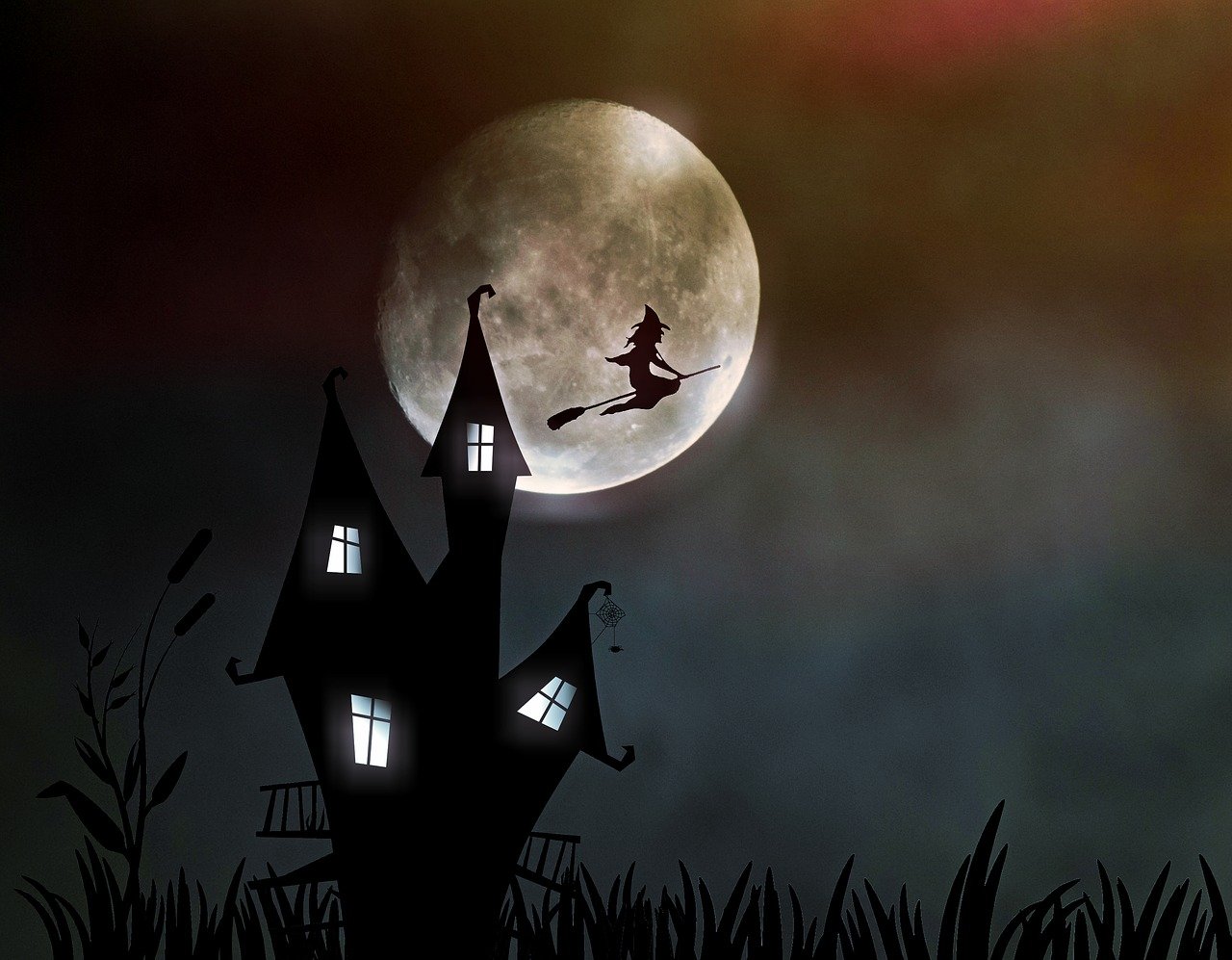Table of Contents
As the leaves turn golden and the air carries a hint of crispness, the anticipation of Halloween permeates the atmosphere. October 31st, the date that now marks Halloween, has its roots in an ancient Celtic festival known as Samhain. The influence of Samhain on contemporary Halloween traditions is profound and fascinating. In this article, we will explore the connections between these two celebrations, shedding light on how the past continues to shape our modern-day festivities.
As the leaves turn golden and the air carries a hint of crispness, the anticipation of Halloween permeates the atmosphere. October 31st, the date that now marks Halloween, has its roots in an ancient Celtic festival known as Samhain. The influence of Samhain on contemporary Halloween traditions is profound and fascinating, weaving a tapestry of history and modernity that shapes our October festivities in unique ways.
In this article, we will delve deeper into the connections between these two celebrations, shedding light on how the past continues to breathe life into our modern-day Halloween. From the eerie allure of costumes and the flickering glow of jack-o’-lanterns to the concept of trick-or-treating, we will uncover the rich legacy of Samhain that persists in the beloved holiday we celebrate today. So, let’s embark on a journey through time and tradition, exploring how the ancient echoes of Samhain infuse Halloween with its timeless magic.
Should you desire more in-depth information, it’s available for your perusal on this page: The Origins of Halloween
Samhain: A Festival of Transition
Samhain, pronounced “sow-in” or “sah-win,” is an ancient Celtic festival that predates Halloween by over a thousand years. It was traditionally celebrated in the Celtic lands of Ireland, Scotland and Wales and marked the end of the harvest season and the beginning of winter. Samhain falls on the cusp of the darker half of the year, a time of shorter days and longer nights.
Samhain, pronounced “sow-in” or “sah-win,” emerges from the mists of time as a sacred and profound festival rooted deeply in Celtic traditions. Its origins stretch back over a thousand years, well before the modern Halloween we know today. This ancient celebration was a vital thread woven into the cultural tapestry of Ireland, Scotland and Wales, a time when communities came together to honor the cycles of nature and the mysteries of life and death.
As the final sheaves of grain were gathered from the fields and the last apples were plucked from the trees, Samhain marked the poignant transition from the bountiful days of the harvest to the hushed embrace of winter. It was a moment of reflection and preparation, a time to stockpile provisions and kindle hearth fires in anticipation of the colder, darker months ahead. The veil between the worlds was believed to be at its thinnest during Samhain, allowing the spirits of the departed to walk among the living.
In this liminal space between seasons, the Celtic people found themselves on the cusp of the darker half of the year. The days grew shorter and the nights stretched long, ushering in a period of introspection and deep connection with the unseen forces of the universe. Samhain wasn’t merely a festival; it was a profound acknowledgment of the cyclical nature of life itself.
It was a time for storytelling, as elders passed down the lore of their ancestors and the young listened with rapt attention, preserving the wisdom of the past for future generations. The bonfires that blazed on Samhain night served not only to ward off the encroaching darkness but also as a communal beacon, drawing people together to celebrate their unity and share in the mysteries of the season.
As we delve into the ancient traditions of Samhain, we are reminded of the enduring importance of connecting with nature’s rhythms and cycles. In a world that often rushes forward, we can take a moment to pause, just as our ancestors did, to honor the wisdom of the past, acknowledge the beauty in transition and embrace the magic of the changing seasons. Samhain, with its rich history and timeless significance, offers us a profound opportunity to do just that, as we stand on the threshold of winter’s embrace, ready to embrace the mysteries that lie ahead.
For additional details, consider exploring the related content available here The Origins of Halloween Traditions | Headlines and Heroes
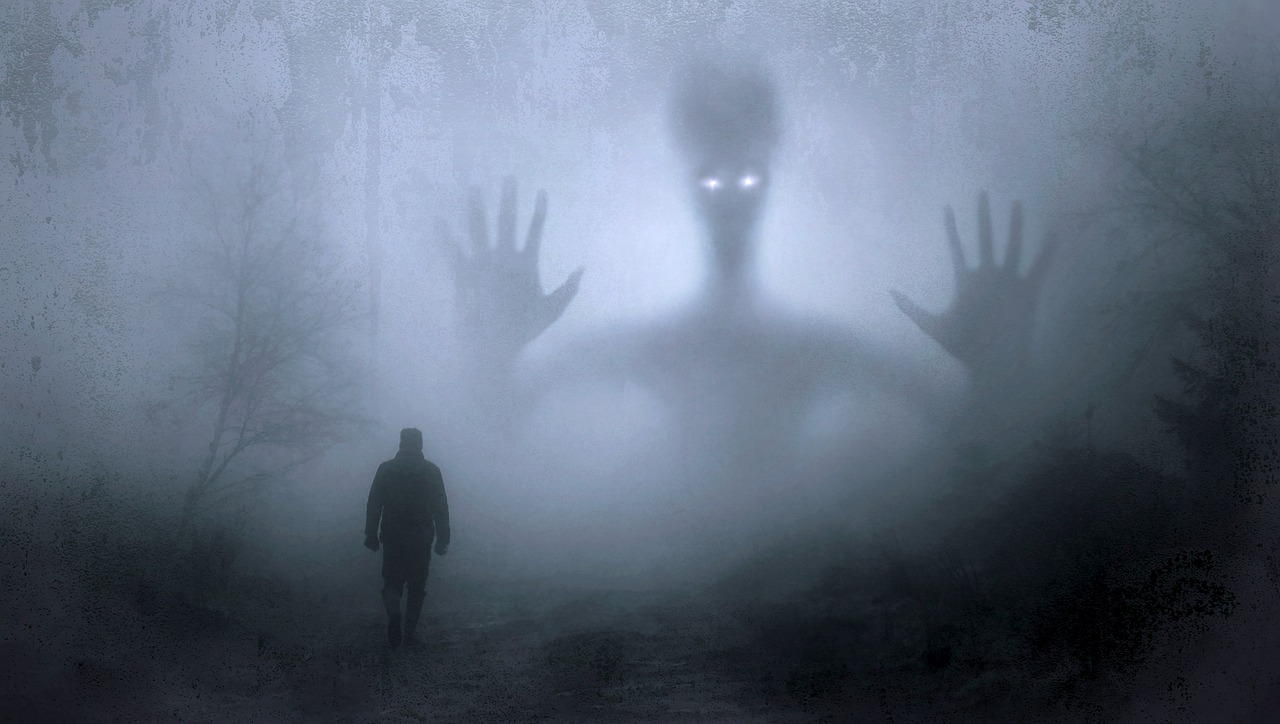
The Thinning Veil
One of the central beliefs of Samhain is that during this time, the veil between the living and the spirit world becomes thin, allowing spirits, both benevolent and malevolent, to pass between realms. This belief led to various customs and traditions associated with the festival, including lighting bonfires, wearing costumes to disguise from wandering spirits and offering food and drink to appease the dead.
The profound belief in the thinning of the veil between the realms during Samhain infuses this ancient festival with a unique sense of mysticism and tradition:
Bonfires and the Guiding Light: Lighting bonfires during Samhain serves a dual purpose. These roaring fires are a beacon of light, guiding the spirits of loved ones back to the earthly realm. They also act as protective barriers, warding off malevolent entities that might seek to cross over. The warmth and radiance of the bonfires symbolize the enduring connection between the living and the departed.
Costumes as Disguises: The practice of wearing costumes during Samhain, which has evolved into the modern tradition of Halloween costumes, originates from the belief that spirits roam freely. Disguising oneself was a means of avoiding recognition by wandering entities, thus protecting individuals from any potential mischief or malevolence. Today, costumes continue to be a playful and creative aspect of Samhain celebrations.
Offerings to Ancestors: The custom of offering food and drink during Samhain is a gesture of hospitality and respect toward the returning spirits of ancestors. It signifies a communal sharing of sustenance and an acknowledgment of the continued bond between the living and the dead. These offerings are often placed on altars or at the doorstep as a heartfelt invitation for the departed to partake in the festivities.
Divination and Guidance: With the veil between worlds thinning, Samhain is a prime time for divination and seeking guidance from the spirit realm. Rituals such as scrying, tarot readings or contacting ancestors through meditation are common during this season. It’s believed that the heightened spiritual energy of Samhain enhances one’s ability to receive insights and messages from the beyond.
Ancestral Stories and Wisdom: Samhain is an occasion to gather with family and friends to share ancestral stories and wisdom. Through storytelling, songs and recounting family histories, the memory of loved ones is kept alive. These traditions reinforce the idea that while the physical form may pass, the spirit endures through the stories and memories we cherish.
Harvest and Feast: Samhain also marks the final harvest of the year, a time when the bounty of the land is celebrated. The gathered crops serve as a reminder of the cyclical nature of life and the importance of sustenance. Feasting during Samhain not only nourishes the body but also honors the interconnectedness of all living beings and the cycles of abundance and scarcity.
Community and Togetherness: Samhain fosters a sense of community and togetherness. The shared rituals, feasts and storytelling gatherings create bonds among people as they collectively honor their shared heritage and the spirits that walk among them.
In essence, the beliefs and customs of Samhain are a testament to the enduring connection between the living and the spirit world. As the veil between realms thins, these traditions provide a means of acknowledging, honoring and seeking guidance from our ancestors and the unseen forces that shape our lives. Samhain is a time to embrace the mysteries of existence and celebrate the timeless bonds that transcend the boundaries of life and death.
Additionally, you can find further information on this topic by visiting this page: Samhain Rituals, Hawthorn, and the Thinning of the Veil …

The Celtic New Year
Samhain also marked the Celtic New Year, a time of reflection and preparation for the winter months. It was a time when communities would come together to celebrate the harvest’s bounty and give thanks for the year’s blessings. This aspect of Samhain resonates with our contemporary Thanksgiving celebrations, where we also gather to express gratitude for the year’s abundance.
Samhain’s significance as the Celtic New Year was not only a time for reflection but also a period of profound preparation for the challenges of the winter months ahead. As the final harvest was gathered, communities would unite to celebrate the abundance provided by the land, offering their heartfelt thanks for the blessings bestowed upon them throughout the year.
Much like our modern-day Thanksgiving celebrations, Samhain was a time to express gratitude. In both traditions, there is a shared sense of appreciation for the year’s abundance and a recognition of the vital role that the Earth and its gifts play in sustaining our lives. Whether through feasting, communal gatherings or heartfelt expressions of thanks, these festivities remind us of the importance of coming together to honor the cycles of nature and the interconnectedness of all living beings.
Samhain’s resonance with Thanksgiving goes beyond the act of gratitude. Both traditions embrace the idea of looking back on the past year and taking stock of our experiences. It’s a time to reflect on the lessons learned, the challenges faced and the growth achieved. In this introspective journey, we find an opportunity for personal and collective growth, setting intentions for the future as we prepare for the colder, darker days of winter.
Moreover, both celebrations recognize the power of community and the bonds that unite us. Whether it’s sharing a bountiful meal with loved ones or joining together in rituals and festivities, the sense of togetherness and unity is a central theme. It reinforces the idea that in times of plenty or scarcity, the support and companionship of our community are invaluable.
In essence, the spirit of Samhain, as the Celtic New Year, transcends time and culture, resonating with the universal human need to pause, reflect and express gratitude for life’s abundance. It reminds us that, regardless of the label we attach to these celebrations, the essence of thankfulness, reflection and unity is something that has endured throughout the ages, connecting us to our ancestors and to the cycles of nature that sustain us.
For a comprehensive look at this subject, we invite you to read more on this dedicated page: The Origins of Halloween Traditions | Headlines and Heroes

The Transformation into Halloween
The influence of Samhain on Halloween can be traced back to the Celtic immigrants who settled in America and brought their customs with them. Over time, Samhain traditions merged with other cultural practices, such as those of European immigrants and indigenous peoples. This fusion gave birth to what we now know as Halloween.
“The Birth of Halloween: A Fusion of Cultural Traditions
The transformation of Samhain into the modern-day Halloween is a fascinating journey through time and cultural evolution. It’s a tale of how traditions, beliefs and practices of various cultures came together to create the enchanting and sometimes eerie holiday we celebrate today.
Celtic Roots of Samhain:
Samhain, deeply rooted in Celtic culture, was a sacred festival marking the end of the harvest season and the beginning of winter. It was a time when the Celts believed that the boundaries between the living and the spirit world blurred. Bonfires were lit to ward off malevolent spirits and offerings were made to honor and seek guidance from ancestors.
The Celtic Diaspora:
As Celtic immigrants settled in America, they brought their Samhain customs with them. However, in this new land, they encountered a tapestry of other cultures and traditions. The fusion of these diverse influences would soon reshape the ancient Celtic celebration.
European Immigrant Influence:
European immigrants arriving in America during the 19th and early 20th centuries brought their own customs and beliefs, including All Saints’ Day and All Souls’ Day. These Christian observances had similarities to Samhain, as they also involved honoring the deceased and praying for their souls.
Indigenous Contributions:
In addition to Celtic and European influences, Halloween also absorbed elements from indigenous cultures. Native American practices related to the changing seasons and honoring the spirits of the land added another layer to the evolving holiday.
The Emergence of Halloween:
Over time, these different traditions intertwined and evolved. The bonfires of Samhain merged with the practice of lighting Jack-o’-lanterns, inspired by European folklore about wandering spirits. The custom of dressing in costumes evolved from a blend of European and Native American traditions, where disguises were worn to confuse or appease spirits. Trick-or-treating, too, has a complex lineage, with elements from both European and indigenous customs.
Modern Halloween’s Multifaceted Identity:
The Halloween we celebrate today reflects this rich tapestry of cultural influences. It’s a holiday that pays homage to the Celtic reverence for the spirit world, the Christian veneration of saints and souls and the indigenous connection to the land. It’s a time for children to dress up as mythical creatures and go door-to-door for treats, a practice with roots in medieval Europe’s All Souls’ Day.
In essence, Halloween is a testament to the resilience and adaptability of traditions as they evolve and intermingle in a diverse and ever-changing world. It’s a holiday that bridges the ancient and the modern, inviting us to embrace the magic and mystery of the season while also celebrating the cultural mosaic that makes our society so rich and dynamic.
So, when you carve a pumpkin, don a costume or participate in any of the myriad Halloween traditions, remember that you’re not just celebrating one culture or tradition—you’re partaking in a vibrant tapestry of history, beliefs and customs that have come together to create the enchanting celebration we know and love as Halloween.”
Looking for more insights? You’ll find them right here in our extended coverage: A Brief History of Halloween | The New York Public Library

Common Elements
Several key elements of Samhain made their way into contemporary Halloween traditions:
Several key elements of Samhain made their way into contemporary Halloween traditions, enriching this modern celebration with ancient roots and profound symbolism. As we don costumes and carve jack-o’-lanterns, it’s important to recognize the historical significance behind these customs:
Costumes: The practice of wearing costumes on Halloween has its origins in Samhain. Ancient Celts would don masks and disguises to blend in with wandering spirits and protect themselves from malevolent entities believed to roam the earth during this time. Today, Halloween costumes allow us to playfully connect with this tradition, embracing our own transformative potential and the idea of temporarily becoming someone or something else.
Jack-o’-Lanterns: Carved pumpkins or jack-o’-lanterns, have become an iconic symbol of Halloween. However, their roots can be traced back to Samhain’s association with spirits. In Celtic folklore, turnips or gourds were carved with eerie faces and lit with candles to ward off wandering souls. This practice evolved into the pumpkin-carving tradition we know today, serving as a means of both protection and decoration.
Trick-or-Treating: The concept of trick-or-treating also has ties to Samhain. In medieval Europe, people would go “souling” on All Souls’ Day, a Christian holiday that incorporated elements of Samhain. They would visit homes, offering prayers for the deceased in exchange for “soul cakes” or other treats. Over time, this practice merged with Halloween, resulting in the modern tradition of children going door-to-door for candy.
Bonfires: The tradition of lighting bonfires during Samhain to ward off evil spirits and honor the deceased persists in modern Halloween celebrations. While large communal bonfires have given way to smaller, safer fires and firework displays, the symbolic act of illuminating the darkness endures as a way to connect with Samhain’s ancient spirit.
Divination: Samhain was a time for divination, as the thinning of the veil between worlds was believed to enhance one’s ability to glimpse the future or communicate with spirits. Some contemporary Halloween activities, like bobbing for apples or using a Ouija board, can be seen as echoes of this tradition. People engage in these activities for fun, but they also carry a hint of the mystical, connecting us to Samhain’s spiritual legacy.
By recognizing the links between Samhain and Halloween, we not only enjoy a deeper understanding of the holiday but also pay homage to the rich tapestry of cultural and spiritual traditions that have contributed to the Halloween we celebrate today. It’s a reminder that even in our modern festivities, ancient wisdom and symbolism continue to shape our collective consciousness and provide a bridge to the past.
Should you desire more in-depth information, it’s available for your perusal on this page: What Is Samhain? Origin of Halloween Rooted in Pagan Holiday …

Costumes
The practice of wearing costumes on Halloween can be directly linked to the Celtic tradition of disguising oneself to ward off spirits during Samhain.
The practice of wearing costumes on Halloween can be directly linked to the Celtic tradition of disguising oneself to ward off spirits during Samhain. This ancient custom has evolved over time, merging with various cultural influences to become the vibrant and creative costume tradition we know today. Here’s a closer look at the connection between costumes and Samhain and how it has evolved:
Warding off Malevolent Spirits: In the Celtic festival of Samhain, it was believed that the veil between the physical world and the spirit world grew thin, allowing spirits, both benevolent and malevolent, to roam freely. To protect themselves from potentially harmful entities, people would don disguises or masks. These costumes were not meant to be elaborate or celebratory but served a practical purpose — to hide one’s true identity and intentions.
Honoring Ancestors and the Supernatural: As Samhain customs blended with Christian traditions, All Saints’ Day (November 1st) and All Souls’ Day (November 2nd), the focus shifted from warding off spirits to honoring them. Costumes began to represent saints, angels and various supernatural beings. People dressed up as these entities as a form of reverence and commemoration.
Harvest and Masquerade Balls: In the Middle Ages, the practice of wearing costumes on Halloween started to incorporate elements of celebration and merriment. Harvest festivals and masquerade balls became popular during this time, with participants donning elaborate costumes and masks. These events often featured dancing, feasting and games and costume-wearing became a way to express creativity and engage in festive activities.
Immigrant Influences: Halloween as we know it in the United States today was significantly influenced by Irish and Scottish immigrants who brought their Samhain traditions with them. Over time, these traditions merged with those of other cultures, resulting in a unique American Halloween celebration. Costume-wearing became a central part of this celebration, especially for children who went door-to-door in search of treats.
The Modern Costume Tradition: In the 20th century, Halloween costumes took on a broader range of characters, including popular figures from literature, movies and pop culture. People began to express their creativity by crafting or purchasing costumes that ranged from spooky and macabre to humorous and whimsical. Today, Halloween costumes encompass a wide spectrum of styles and themes, allowing people to become anything they can imagine for a night.
Personal Expression and Fun: While the original purpose of disguising oneself during Samhain was rooted in superstition and protection, modern Halloween costumes are primarily about personal expression and having fun. People of all ages use this opportunity to embody their favorite characters, explore their creativity or simply enjoy a night of playful transformation.
In essence, the act of wearing costumes on Halloween pays homage to the ancient Celtic tradition of disguising oneself during Samhain, a tradition that evolved over time to become an integral part of the diverse and festive Halloween celebrations we enjoy today. It connects us with our ancestors and their reverence for the supernatural while allowing us to express our creativity and imagination in a lighthearted and enjoyable way.
To expand your knowledge on this subject, make sure to read on at this location: From Samhain to Halloween: The History of Halloween Traditions …

Jack-o’-Lanterns
The Irish tradition of carving lanterns out of turnips and later, pumpkins, to ward off evil spirits is the origin of the modern jack-o’-lantern.
The transformation of the humble turnip into the modern jack-o’-lantern is a fascinating journey that intertwines history, folklore and the evolution of traditions. Understanding this progression adds depth to the cherished custom of carving pumpkins during Halloween and offers a glimpse into the enduring spirit of these lanterns:
Ancient Beginnings: The origins of carving lanterns for protection against evil spirits can be traced back to ancient Celtic traditions, particularly in Ireland and Scotland. The Celts celebrated Samhain, a festival marking the end of the harvest season and the beginning of winter. It was believed that during this time, the veil between the realms of the living and the dead was at its thinnest, allowing spirits to roam freely.
Turnip Lanterns: In Ireland and Scotland, people initially carved lanterns out of turnips or rutabagas. These vegetables were abundant in the region and easily hollowed out for lantern-making. They were often placed on windowsills and doorways to ward off malevolent spirits and provide protection to households.
Legend of Stingy Jack: The term “jack-o’-lantern” finds its roots in Irish folklore, specifically the legend of “Stingy Jack.” According to the tale, Jack was a deceitful and cunning man who managed to trick the Devil multiple times. When Jack died, Heaven didn’t want him and the Devil, still holding a grudge, wouldn’t allow him into Hell. Instead, Jack was condemned to wander the earth with only a lit turnip as his lantern to light the way.
Migration to America: When Irish and Scottish immigrants arrived in North America in the 19th century, they brought their Samhain traditions, including turnip lanterns, with them. However, they soon discovered that pumpkins, which were native to the New World, were more readily available and easier to carve than turnips.
Pumpkin Transformation: The transition from turnips to pumpkins marked a significant shift in the evolution of the jack-o’-lantern. Pumpkins were not only larger but also had a malleable, smooth surface, making them ideal for intricate carving. They also offered a blank canvas for creative expression.
Continuation of the Tradition: The practice of carving pumpkins for Halloween became more widespread and entrenched in American culture. Over time, it evolved from a protective symbol to a decorative and festive tradition. Today, people of all ages carve intricate designs, spooky faces and imaginative creations on pumpkins to celebrate Halloween.
Illuminating the Night: The practice of placing lit jack-o’-lanterns outside homes on Halloween night serves both decorative and symbolic purposes. The warm, flickering glow of these lanterns is thought to ward off evil spirits while also adding to the eerie, enchanting ambiance of the holiday.
Modern Creativity: Jack-o’-lantern carving has evolved into a form of artistic expression. Competitions and festivals dedicated to pumpkin carving showcase the incredible talent and creativity of artists and enthusiasts alike.
Community and Tradition: Carving pumpkins has become a cherished community activity, where families and friends gather to create their own unique jack-o’-lanterns. It’s a tradition that fosters togetherness and creativity.
In conclusion, the jack-o’-lantern’s journey from the turnip lanterns of ancient Celtic traditions to the modern pumpkin carvings of Halloween is a testament to the enduring power of folklore and cultural adaptation. It not only reflects the evolving nature of traditions but also highlights the significance of creativity and community in celebrating the spirit of the season. Today, the jack-o’-lantern remains a symbol of both protection and playful enchantment during the Halloween season.
You can also read more about this here: Halloween Owes Its Tricks and Treats to the Ancient Celtic New …
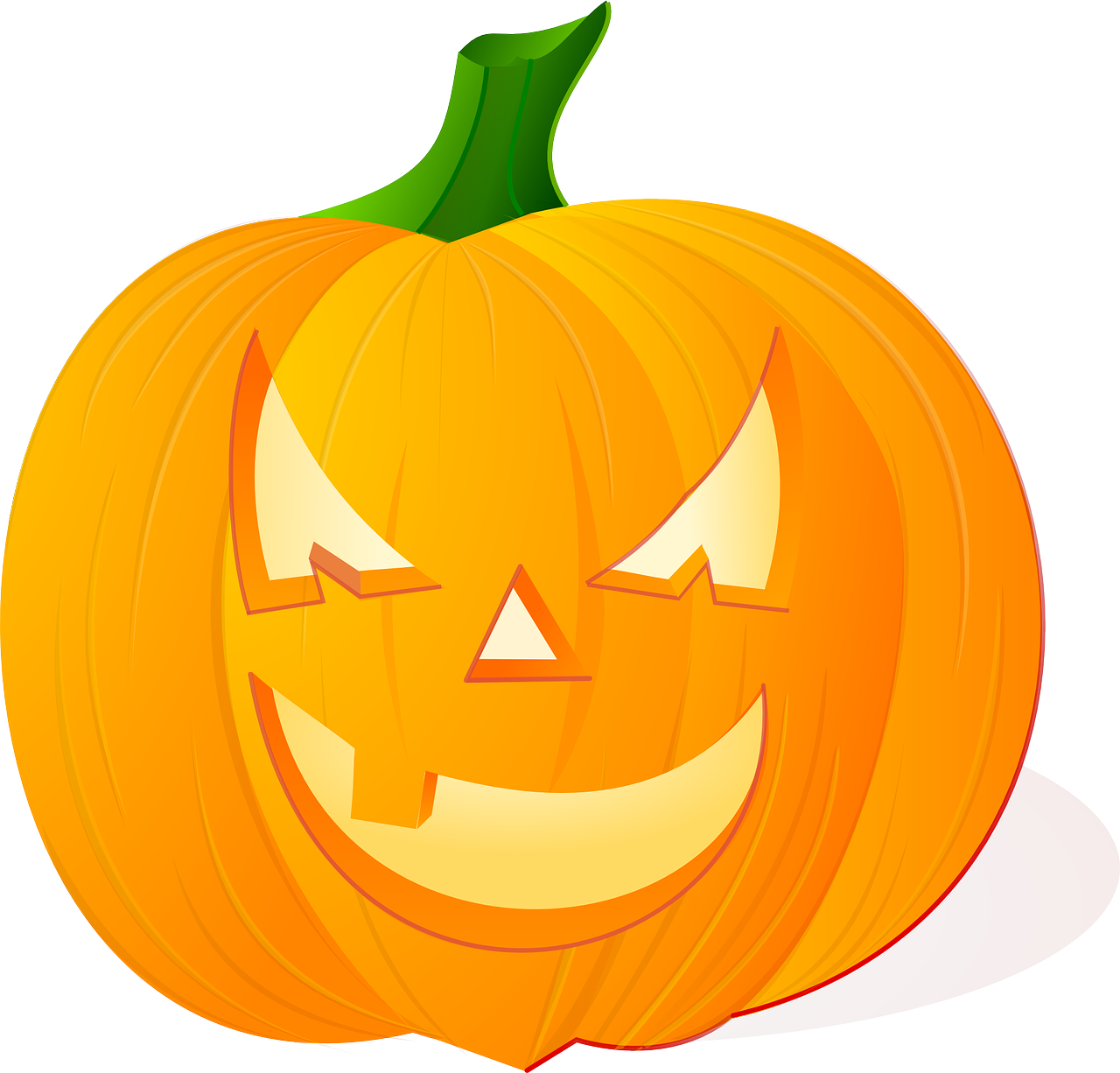
Trick-or-Treating
The custom of going door to door and receiving treats has its roots in the practice of offering food and drink to appease wandering spirits during Samhain.
The custom of going door to door and receiving treats has its roots in the practice of offering food and drink to appease wandering spirits during Samhain. This age-old tradition, which has evolved into modern-day trick-or-treating, stems from the belief that during Samhain, the veil between the spiritual and physical realms is at its thinnest.
In ancient times, communities would set out portions of food and beverages to satiate any wandering spirits and prevent their mischief or disruption. This act was a gesture of goodwill and respect for those who had departed, acknowledging their presence and placating any restless souls seeking solace.
As civilizations evolved, so did the customs associated with Samhain. The practice of offering food gradually transformed into children and, later, people of all ages dressing in costumes and going from house to house, receiving treats. The evolution of this custom, while rooted in ancient beliefs, took on a more communal and festive character, emphasizing the playful spirit of the season.
Today, trick-or-treating is a cherished part of Halloween festivities, a joyful experience where children and adults alike don costumes, knock on doors and delight in receiving an array of treats. The act symbolizes a continuation of the ancient spirit of hospitality and generosity, as neighborhoods come together to share in the joy of the season.
While the tradition has shifted over time, its essence remains connected to the fundamental idea of giving and receiving, a reminder of the interconnectedness between the living and the unseen realms. It serves as a testament to the enduring influence of ancient practices and their ability to evolve into beloved contemporary traditions.
Explore this link for a more extensive examination of the topic: What Is Samhain? Origin of Halloween Rooted in Pagan Holiday …
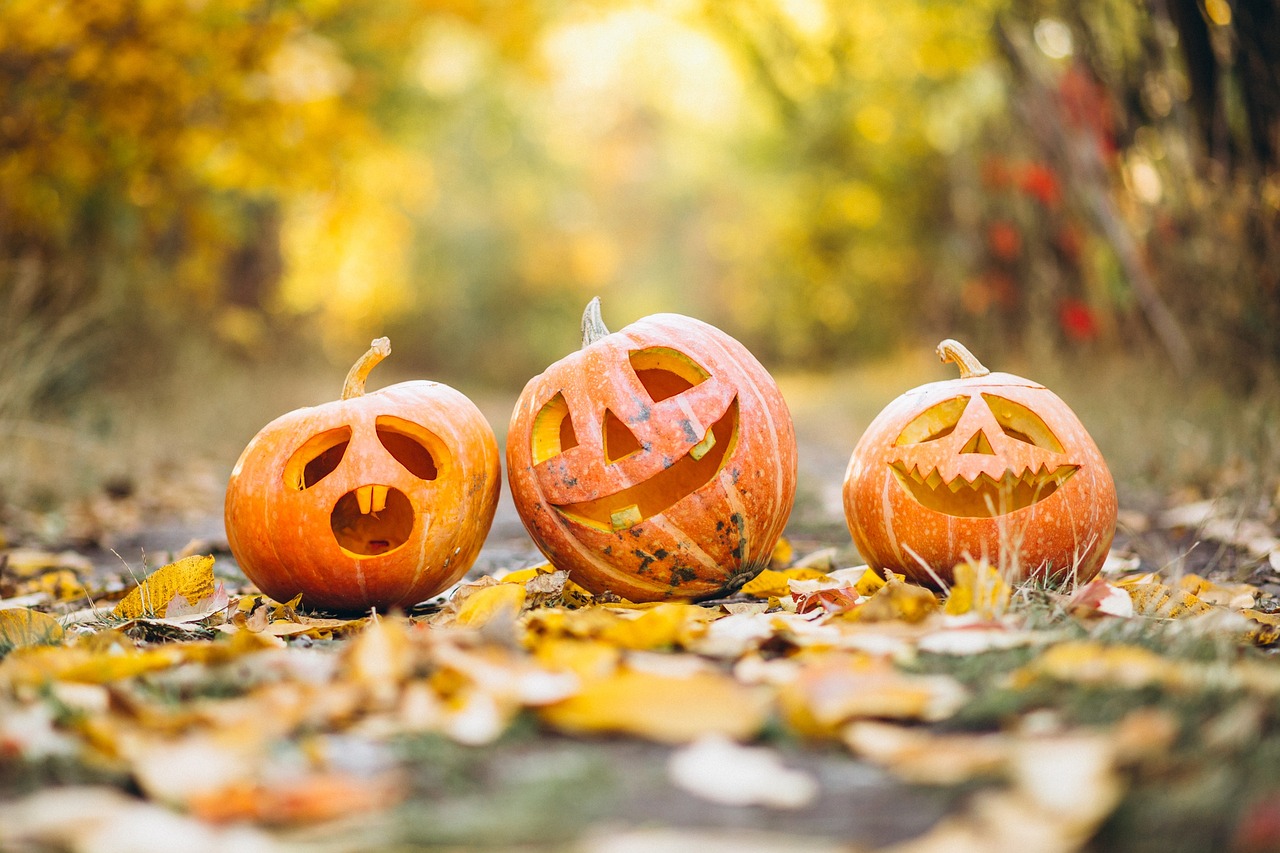
Bonfires
Although less common today, bonfires were once a central feature of Halloween celebrations, mirroring the bonfires lit during Samhain.
Although less common today, bonfires were once a central feature of Halloween celebrations, mirroring the bonfires lit during Samhain. These towering pyres of crackling flames served as beacons, illuminating the night and guiding communities together during this eerie and enchanted evening.
In ancient times, as the veil between the living and the spirit world was believed to thin on Halloween night, bonfires were seen as protective barriers against malevolent forces. The radiant, dancing flames were thought to ward off wandering spirits and mischievous creatures, ensuring that the living could celebrate without fear.
As families and neighbors gathered around the bonfire’s warmth, a profound sense of unity and belonging washed over them. The flickering firelight painted eerie, shifting shadows on their faces, sparking their imaginations and invoking the spirits of storytelling and camaraderie. It was around these fires that ghostly tales and legends of old were shared, creating an atmosphere where the boundaries between reality and the supernatural seemed to blur.
Children, dressed as spirits and ghouls, would take turns leaping over the bonfires, a tradition believed to bring good luck and protection from harm. The flames cast eerie glows on their costumes, making them appear even more ethereal and enchanting.
Over time, as Halloween evolved and modernized, bonfires became less prevalent, giving way to trick-or-treating and other contemporary customs. Yet, the ancient connection between Halloween and Samhain bonfires still lingers in our collective consciousness and in some places, the tradition is being revived.
Today, a resurgence of interest in the rich history of Halloween and Samhain has led to the revival of bonfires as a way to reconnect with the past and honor the ancestors. Communities come together once more, rekindling the spirit of Halloween and the magic of Samhain around roaring bonfires. These gatherings serve as a reminder of the enduring power of tradition and the importance of connecting with our ancestral roots, all while illuminating the night and inviting the mysterious wonders of Halloween to come alive once more.
Additionally, you can find further information on this topic by visiting this page: The Origins of Halloween Traditions | Headlines and Heroes
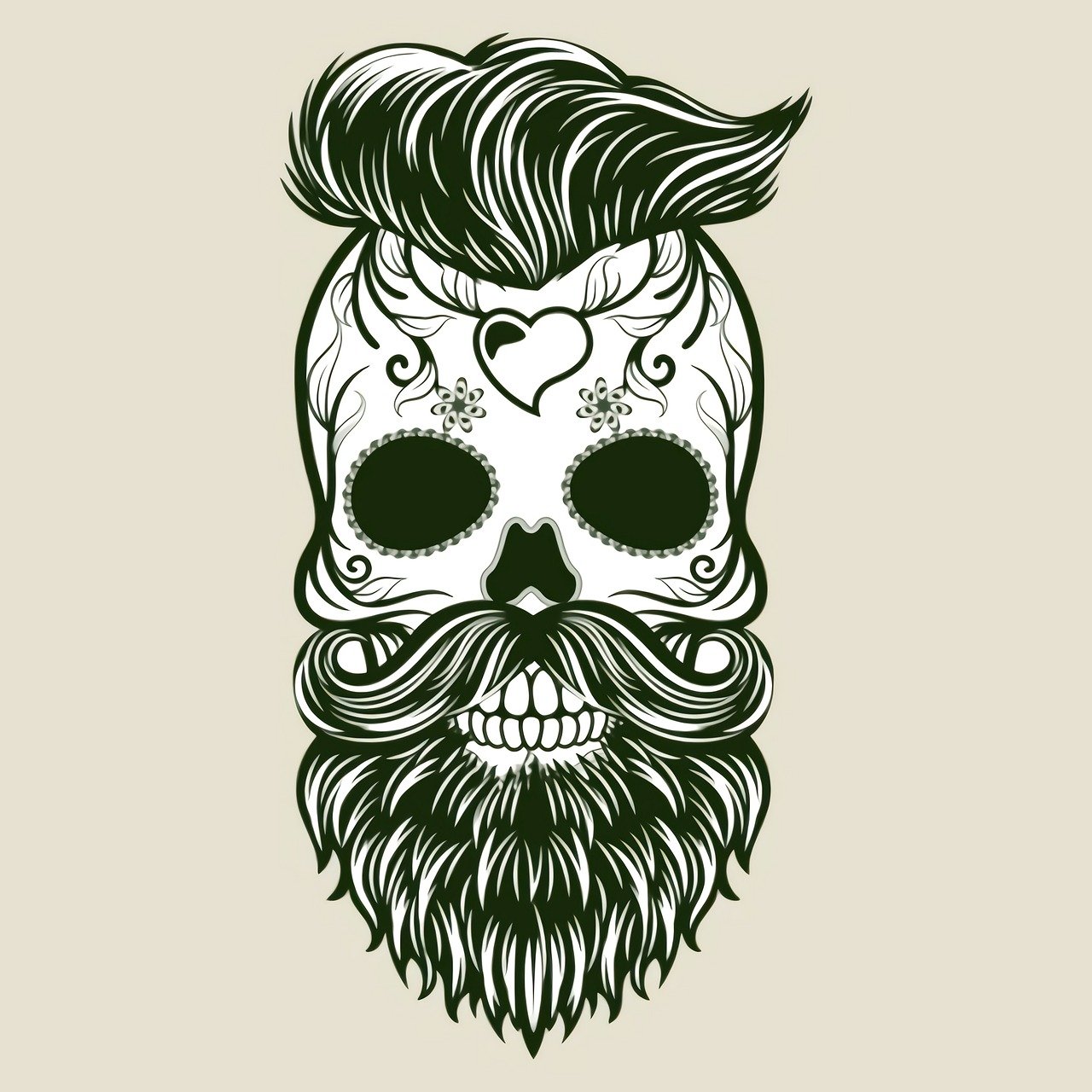
The influence of Samhain on contemporary Halloween traditions is a testament to the enduring power of ancient customs and beliefs. While Halloween has evolved and taken on a commercialized, lighthearted character, it still carries echoes of its Celtic ancestor. As we dress in costumes, carve pumpkins and indulge in treats, we unknowingly participate in a tradition that has its roots in a time when people gathered to honor the changing seasons, connect with the spirit world and celebrate the mysteries of life and death. The spirit of Samhain lives on in our modern Halloween festivities, reminding us of the rich tapestry of history that shapes our cultural heritage.
Explore this link for a more extensive examination of the topic: 6 Scottish Halloween traditions | National Trust for Scotland
More links
To delve further into this matter, we encourage you to check out the additional resources provided here: The Origins of Halloween
